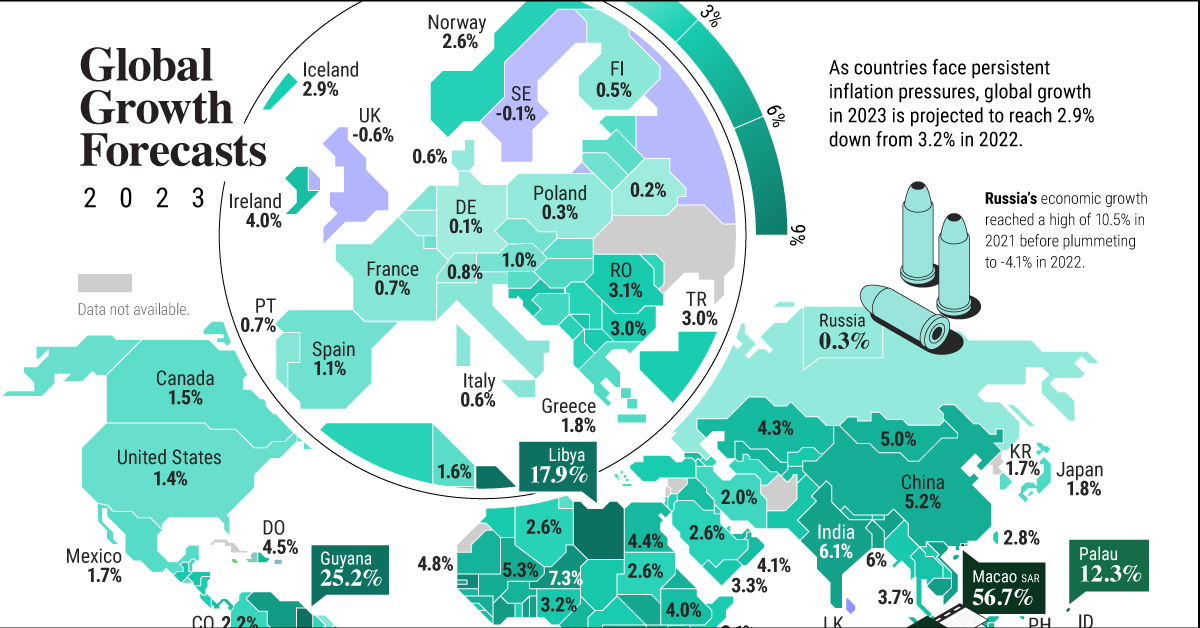Climate Whiplash: A Growing Threat To Cities Worldwide

Table of Contents
The Physical Impacts of Climate Whiplash on Urban Infrastructure
Climate whiplash delivers a one-two punch to urban infrastructure, inflicting damage that traditional designs often fail to withstand. The rapid transitions between extremes strain systems designed for more predictable conditions, leading to cascading failures and immense economic costs.
Damage to Transportation Networks
Extreme weather events significantly disrupt transportation networks. The fluctuating conditions caused by climate whiplash exacerbate existing vulnerabilities:
- Road closures: Heavy rainfall and flooding frequently render roads impassable, crippling commutes and supply chains.
- Bridge collapses: Alternating cycles of freezing and thawing, coupled with intense rainfall, weaken bridge structures, leading to dangerous collapses.
- Public transit delays: Extreme heat can cause power outages affecting rail systems, while flooding can halt bus and tram services, leaving commuters stranded.
This infrastructure damage necessitates significant investment in climate change adaptation measures, improving road surfaces, reinforcing bridges, and developing more robust public transit systems capable of withstanding extreme weather events. Ignoring these challenges risks crippling urban mobility and economic productivity.
Strain on Water Resources
Climate whiplash creates a dangerous seesaw effect on urban water resources. Periods of intense drought are followed by devastating floods, severely stressing water supply and sanitation systems:
- Water scarcity: Prolonged droughts deplete reservoirs and aquifers, leading to water restrictions and shortages.
- Flood contamination: Floodwaters often contaminate drinking water supplies, increasing the risk of waterborne diseases.
- Overburdened sewage systems: Intense rainfall overwhelms sewage systems, leading to overflows and the spread of disease.
Effective urban water management requires integrated strategies that balance drought preparedness with flood resilience. This includes investing in water storage, improving water treatment infrastructure, and developing more efficient irrigation systems.
Damage to Buildings and Housing
The unpredictable swings in temperature and precipitation associated with climate whiplash significantly impact buildings and housing:
- Heat stress: Extreme heat damages building materials, causing cracking and expansion, while also increasing energy demands for cooling.
- Flood damage: Rapid and intense rainfall can overwhelm drainage systems, leading to widespread flooding that damages building foundations and interiors.
- Wind damage: Strong winds associated with severe storms can cause structural damage to buildings, especially older structures.
Building resilience requires adopting climate-resistant construction techniques, improving building codes, and implementing urban planning strategies that minimize the risk of damage from extreme weather events. Retrofitting existing buildings and constructing new ones with climate-resistant materials is crucial for long-term protection.
The Social and Economic Consequences of Climate Whiplash
Beyond the physical damage, climate whiplash exacts a heavy social and economic toll on cities. The cascading effects ripple through communities, impacting public health, the economy, and social stability.
Public Health Impacts
The rapid fluctuations in weather conditions significantly affect public health:
- Heat-related illnesses: Extreme heatwaves lead to heatstroke, exhaustion, and other heat-related illnesses, disproportionately affecting vulnerable populations such as the elderly and those with pre-existing conditions.
- Waterborne diseases: Flooding contaminates water supplies, increasing the risk of waterborne diseases like cholera and typhoid fever.
- Respiratory illnesses: Increased air pollution from wildfires and dust storms associated with extreme weather events exacerbates respiratory problems.
Addressing these climate change health impacts requires investing in public health infrastructure, improving early warning systems for heatwaves, and ensuring access to clean water and sanitation for all.
Economic Disruptions
Climate whiplash inflicts substantial economic damage:
- Infrastructure repair costs: The cost of repairing damaged infrastructure after extreme weather events is often enormous.
- Business interruptions: Businesses are forced to close due to power outages, flooding, or other disruptions, leading to significant economic losses.
- Displacement and relocation: Individuals and communities are displaced due to damage to their homes, creating further economic hardship.
The economic losses associated with climate whiplash highlight the urgent need for effective disaster recovery mechanisms, climate-resilient infrastructure investments, and comprehensive insurance schemes to mitigate economic disruption.
Social Instability and Migration
Climate whiplash can exacerbate existing social inequalities and trigger mass migration:
- Increased competition for resources: Extreme weather events can strain resources such as water and food, leading to conflicts and social unrest.
- Displacement and relocation: People forced to leave their homes due to climate-related disasters may migrate to urban areas, potentially straining resources and infrastructure.
- Exacerbation of existing inequalities: Vulnerable populations are often disproportionately affected by climate whiplash, widening the gap between rich and poor.
Addressing climate migration requires proactive urban planning, ensuring equitable access to resources, and fostering social cohesion to prevent climate-related social instability.
Mitigation and Adaptation Strategies for Cities Facing Climate Whiplash
Building resilient cities requires a multifaceted approach that combines mitigation and adaptation strategies.
Improving Urban Planning and Design
Sustainable urban development is essential for mitigating the impacts of climate whiplash:
- Green infrastructure: Implementing green infrastructure, such as green roofs, urban forests, and permeable pavements, can help manage stormwater runoff and reduce the urban heat island effect.
- Improved drainage systems: Investing in robust drainage systems is critical for preventing flooding and managing stormwater runoff effectively.
- Climate-resilient urban planning: Integrating climate change projections into urban planning is vital for making informed decisions about land use, infrastructure development, and community resilience.
Investing in Early Warning Systems
Advanced weather forecasting and early warning systems are crucial for minimizing the impact of extreme weather events:
- Improved weather forecasting: Investing in advanced weather forecasting technologies can help cities better predict and prepare for extreme weather events.
- Community preparedness: Developing and implementing community preparedness plans, including evacuation strategies and emergency response protocols, is crucial for minimizing casualties and damage.
- Effective communication: Establishing effective communication channels to disseminate warnings and information to the public is vital for ensuring timely response.
Strengthening International Cooperation
Addressing climate change requires global collaboration:
- International agreements: Strengthening international agreements and commitments to reduce greenhouse gas emissions is crucial for mitigating climate change.
- Climate finance: Developed nations need to provide financial support to developing countries to help them adapt to the impacts of climate change.
- Knowledge sharing: Facilitating the sharing of best practices and knowledge among cities is essential for accelerating the adoption of climate-resilient strategies.
Conclusion
Climate whiplash poses a severe and escalating threat to cities worldwide. Its devastating impacts on infrastructure, public health, the economy, and social stability demand urgent action. Building truly resilient cities requires a comprehensive approach that integrates improved urban planning, robust early warning systems, and strong international cooperation. Understanding the complexities of climate whiplash is crucial for building truly resilient cities. Learn more about how you can contribute to climate change mitigation and adaptation efforts in your community, and advocate for policies that address the growing threat of climate whiplash, ensuring a safer and more sustainable future for all.

Featured Posts
-
 Nine Points 99th Minute Heartbreak How Ajax Lost The Championship
May 28, 2025
Nine Points 99th Minute Heartbreak How Ajax Lost The Championship
May 28, 2025 -
 2025 Canadian Economic Forecast Oecd Projects Stagnant Growth No Recession
May 28, 2025
2025 Canadian Economic Forecast Oecd Projects Stagnant Growth No Recession
May 28, 2025 -
 Housing Corporations Face E3 Billion Loss Due To Rent Freeze
May 28, 2025
Housing Corporations Face E3 Billion Loss Due To Rent Freeze
May 28, 2025 -
 Feyenoord And Psv Battle For Second As Ajax Marches Toward Eredivisie Title
May 28, 2025
Feyenoord And Psv Battle For Second As Ajax Marches Toward Eredivisie Title
May 28, 2025 -
 Is A Rodrygo Transfer To Arsenal On The Cards Real Madrid Offer Imminent
May 28, 2025
Is A Rodrygo Transfer To Arsenal On The Cards Real Madrid Offer Imminent
May 28, 2025
